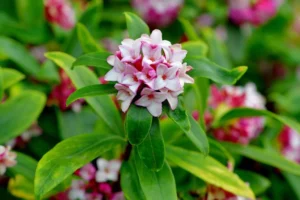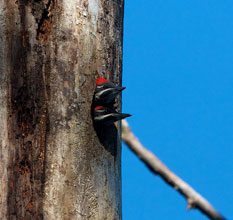
Daphne Odora
I was musing about the ways I could lessen my work in the garden and still have the lush colors and textures I wanted, and it occurred to me that I already had a pretty good start. The answer was flowering shrubs. Minimal maintenance and a big bang for your buck.
So I did some research and imagine my surprise when my list of shrubs that flower and thrive here in the Lowcountry reached over 50! Many of the names were new to me or were rare in this area – not normally seen, if ever, in local nurseries.
Enter independent nurseries, both local, online, and within a day’s round trip (if you start early). Nothing is more fun than you and two or three friends talking about plants while going to and from an out-of-town nursery. It helps tremendously if one has a Minivan or an SUV because you’ll surely over-buy.
If more than one of you wants to purchase a specific plant, only one needs to buy it, because she’ll be happy to give the others cuttings. More than ever, with the price of plants these days, it pays to share.
Some of the ones I have, or are worth searching out, include:
Daphne odora has one of the most divine fragrances known to man, but it is persnickety. It will just disappear one day for no good reason. It hates our relentless sun, so keep it in a shady, moist spot, and it should be okay – at least for a few years. It’s evergreen and stays about two feet high.
Serissa japonica or “Tree of a Thousand Stars” isn’t really a tree at all, but a small shrub that is literally covered with small pink or white flowers. It loves our sun and heat and blooms all summer. The variegated one is just beautiful.
Fothergilla is native to the Southeast but I’ve never seen one in a Lowcountry garden. It’s a small spreading shrub with bottle brush shaped white flowers that smell like honey. Talk about Coals to Newcastle. I had to bring mine from Illinois! It doesn’t make a loud statement in the garden, but I like it.
Bauhinia or Hong Kong Orchid tree usually stays a shrub under five feet tall and wide and has lovely, unusual dark pink orchid-like flowers from late winter through early summer. The two-lobed leaves have the charming habit of closing like a book at night. After a particularly harsh winter several years ago, I thought mine had succumbed to the cold and dug it up and threw it into the wild area. A few years later, while walking in the wild area, I spied it blooming! I re-planted it and it has bloomed every year since. Wow! What a survivor.
One on my wish list is Halesia or Silver Bells, which can grow into a small tree if left to its own devices, but judicious pruning keeps it shrub-like. In spring, the small dangling bell-like white flowers cover the shrub and are just stunning! I ordered one online and I can’t wait to get it.
Tecoma stans stands with one foot in the shrub class and the other in the tree, but it’s in the same family as Trumpet Vine so even if it becomes a small, evergreen tree, its long drooping branches are just covered with yellow trumpet bells in spring, giving it its common name of “Yellow Bells.” There are, however, cultivars which are bred to stay small.
I think the list I made of flowering shrubs and their description and culture information might be helpful, so if you want a copy, just email me at educated.fireant@gmail.com and I will send it to you. I’m sure there are more that aren’t on the list, and I can’t vouch for 100% accuracy for your particular conditions, but it should do for a general guideline.
Happy gardening!








